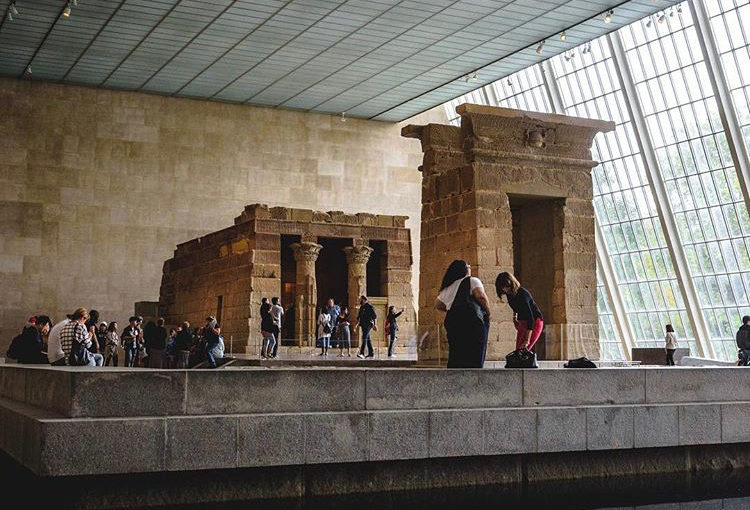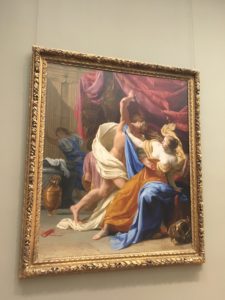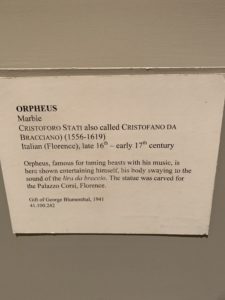
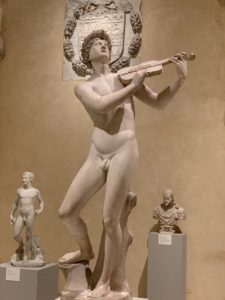
This sculpture is a depiction of Orpheus, known for being a famous musician and poet in Greek mythology, playing the violin. At the immediate eye view, one notices that the Bronze statue is very big in size- especially when seen in relativity to the other statues around it. The large scale of the statue helps catch one’s eyes and stand out amongst the others. Although it’s one solid color throughout, there are many details that bring the statue to life and give it a unique character, From the way the hind leg is positioned to be bent and elevated in relation to the front leg, to the way he’s playing the violin on the other side of his body as he looks upward not only makes it seem human-like, but it gives it almost this grace in it’s expression. The loss in stiffness, helps remind the readers, aside from the violin, that he’s an artist. This is an example of Renaissance art because there’s a lot of more flow in expression that help attribute to this overall involvement of art and even “rebirth”, which is what the Renaissance was all about.

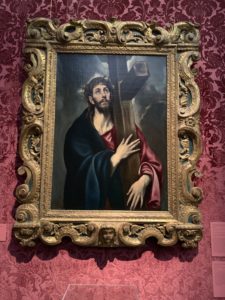
This painting is an image of Christ, carrying the cross. Christ being a very important and symbolic figure with significant Religious meanings, globally. In the painting, Christ is holding the cross very firmly with both hands (and as we know in Baroque Art there was the common presence of religion in the art) which can be interpreted as holding onto religion, as it wasn’t something fully accepted at the time. The colors, navy blue and a red that has rose highlights creating a silk looking material, are highly contrasted among the background of dark clouds, as is the Brown cross with white detailing creating a wooden appearing surface. Again, bringing attention to Christ and the cross, symbols of religion. Lastly, Christ himself is looking up to the sky and often this is a symbol or gesture done for hope, one done when in desperate needs, at that. With another symbol of hope this may reveal how hope and religion went hand in hand, and therefore baroque art was used not only to create dramatic, emotional art, but also to coincide with the more political side of things which involved religion.
While both Baroque and Renaissance art have had significant impacts in expression during their time periods, both were very different in how they manifested in art. Renaissance art included more Humanism, Realism, Greek/Roman art forms, linear perspectives, architecture, music, and much more. Baroque art, on the other hand involved more color, more dramatic scenes, details, to “create a sense of awe” for the audience, with intentions to “appeal to emotion”, and etc. They are both significant because they help show the difference in focuses and ideologies that Art helped carry throughout each of these specific time periods.


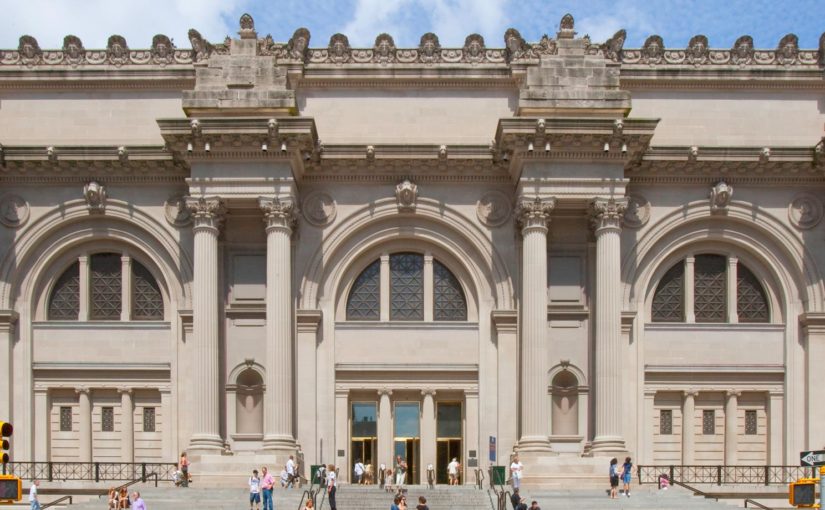
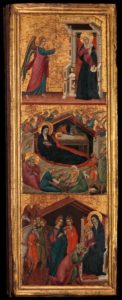
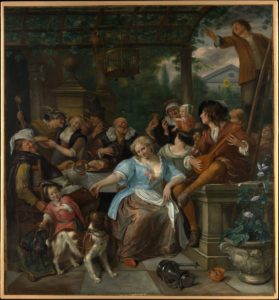
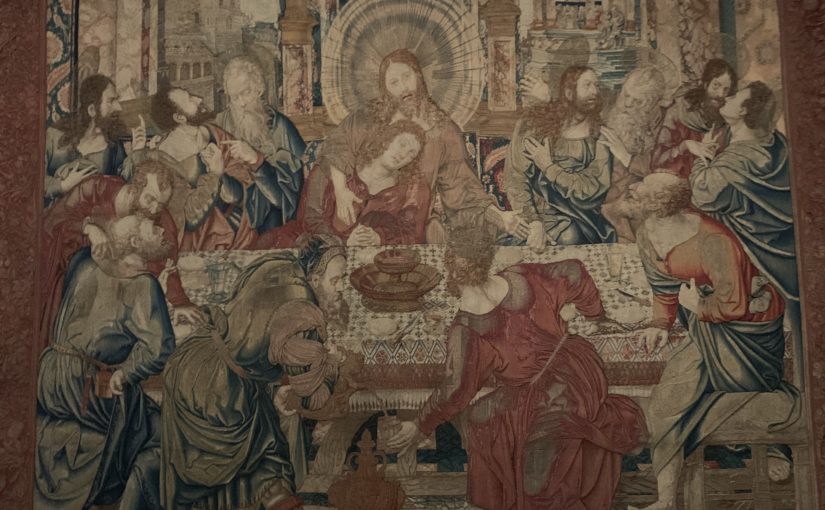




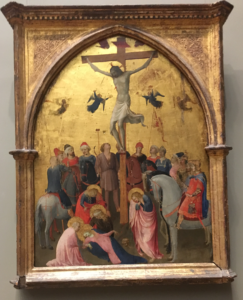 For the Renaissance era I used Fra Angelico’s “The Crucifixion,” dated to the 1420s. This is a great example of Renaissance art because it focuses on a violent religious event, however, the artist manages to make the scene appear delicate. The picture depicts Christ crucified on the cross with people surrounding him and angels in the background. Some of the men appear to be holding spears that have caused the wounds on Christ. There is blood coming out Christ’s chest, but true to Renaissance qualities even that appears still and light, like the other hues of red in the painting that are also light. Even the Virgin Mary passed out on the floor lacks the dramatic chaos of what would be seen if this were to be a Baroque painting.
For the Renaissance era I used Fra Angelico’s “The Crucifixion,” dated to the 1420s. This is a great example of Renaissance art because it focuses on a violent religious event, however, the artist manages to make the scene appear delicate. The picture depicts Christ crucified on the cross with people surrounding him and angels in the background. Some of the men appear to be holding spears that have caused the wounds on Christ. There is blood coming out Christ’s chest, but true to Renaissance qualities even that appears still and light, like the other hues of red in the painting that are also light. Even the Virgin Mary passed out on the floor lacks the dramatic chaos of what would be seen if this were to be a Baroque painting.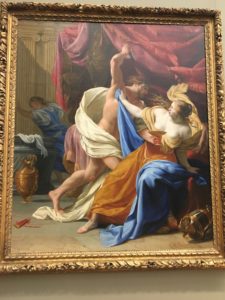 painting that caught my attention because of what was being shown. Although there are only three people in the painting, it seems like there is a lot happening. At the forefront is a man with a dagger held high, aimed at a woman with her breasts peeking out of her disheveled dress. Both of their faces show fear, which adds to the mayhem surrounding them. True to Baroque era qualities, there is real sense of dramatic disorder, especially upon looking into the context of the story which is one of a man named Amnom- the son of David- raping his half-sister. This action in the painting is illustrated through the running maid in the background, the vases scattered on the floor, and the flying sheets and clothes. Despite being a painting, there is no stillness to the painting and the audience can practically feel the urgent emotions that are being shown.
painting that caught my attention because of what was being shown. Although there are only three people in the painting, it seems like there is a lot happening. At the forefront is a man with a dagger held high, aimed at a woman with her breasts peeking out of her disheveled dress. Both of their faces show fear, which adds to the mayhem surrounding them. True to Baroque era qualities, there is real sense of dramatic disorder, especially upon looking into the context of the story which is one of a man named Amnom- the son of David- raping his half-sister. This action in the painting is illustrated through the running maid in the background, the vases scattered on the floor, and the flying sheets and clothes. Despite being a painting, there is no stillness to the painting and the audience can practically feel the urgent emotions that are being shown.










